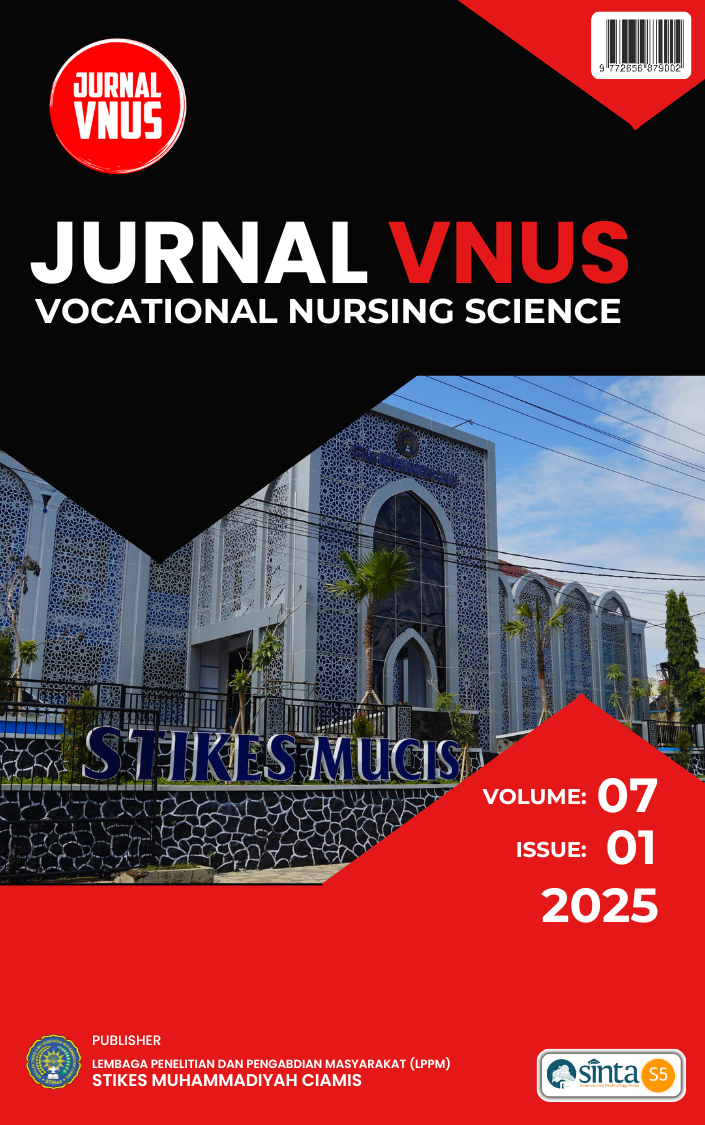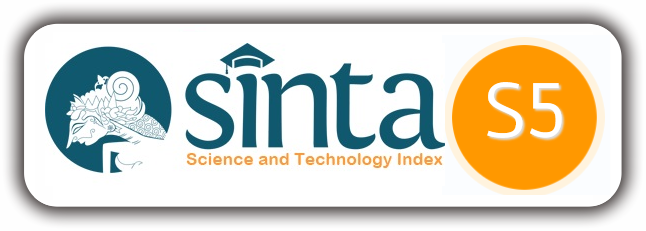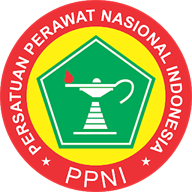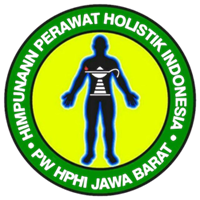Application of Foot Massage Therapy to Reduce Pain in Post-Caesarean Section Patients
DOI:
https://doi.org/10.52221/jvnus.v7i1.757Keywords:
Foot Massage, Pain, Caesarean Section, Non-Pharmacological TherapyAbstract
Caesarean section (C-section) is a surgical procedure involving an incision through the abdominal and uterine walls to deliver the fetus. This procedure disrupts tissues, blood vessels, and nerves, often resulting in postoperative pain. Pain management strategies include both pharmacological and non-pharmacological interventions. Foot massage is one non-pharmacological approach involving skin stimulation techniques. To examine the application of foot massage therapy in reducing pain among post-C-section patients. This research used a descriptive case study design and was conducted at RSUD Labuang Baji Hospital, Makassar, over six days. Two participants who met the inclusion criteria (first-day post-C-section, aged 20–30, moderate pain level) were selected. Exclusion criteria included uncooperative behavior, loss of consciousness, or severe bleeding. Data collection involved interviews, observations, and documentation. Instruments included a standard operating procedure (SOP) for foot massage and the Numeric Rating Scale (NRS) for pain assessment. Results were presented in narrative and tabular formats. Both participants showed a reduction in pain levels after receiving foot massage therapy. Participant N reported pain decreasing from 6 to 2 over three days, while participant S experienced a decrease from 5 to 3. The decrease was more significant in participant N, who received consistent family support and practiced the therapy more regularly. Conclusion: Foot massage therapy may help reduce pain in post-C-section patients. It is recommended as a supportive, non-pharmacological option in postoperative care.
Downloads
References
Aisyah, S. (2017). Manajemen nyeri pada lansia dengan pendekatan non-farmakologi. Jurnal Keperawatan Muhammadiyah, 2(1). https://doi.org/10.30651/jkm.v2i1.1201
Arianti, A., Mayna, N. P., & Hidayat, Y. (2020). Mobilisasi dini terhadap pemulihan peristaltik usus dan skala nyeri pasien post pembedahan. Journal of Holistic Nursing Science, 7(1), 21–31. https://doi.org/10.31603/nursing.v7i1.2987
Caesarea, P. S. (2024). Nyeri, pijat, sectio caesarea. Jurnal Kesehatan, 10(1), 96–104.
Damayanti, A. P., & Nurrohmah, A. (2023). Penerapan terapi foot massage untuk mengurangi nyeri pada pasien post sectio caesarea di RS PKU Muhammadiyah Karanganyar. SehatRakyat: Jurnal Kesehatan Masyarakat, 2(3), 433–441. https://doi.org/10.54259/sehatrakyat.v2i3.1951
Wardani, I. K. F., & Marlina, Y. S. (2022). Faktor-faktor yang berhubungan dengan proses penyembuhan luka perineum. Jurnal Kesehatan, 1–10.
Lian. (2023). Pain management. National Center for Biotechnology Information. https://www.ncbi.nlm.nih.gov/books/NBK558907/
Liestanto, F., & Fithriana, D. (2020). Perilaku pencegahan penyakit tidak menular pada remaja Ambon. Jurnal Kesehatan, 2(1), 16.
Marselina, I. (2021). Laporan tugas akhir: Asuhan keperawatan dengan pemberian foot massage dalam manajemen nyeri pada pasien post sectio caesarea. STIKES Sapta Bakti.
Muliani, R., Suprapti, T., & Nurkhotimah, S. (2020). Stimulasi kutaneus (foot massage) menurunkan skala nyeri pasien lansia dengan rheumatoid arthritis. Jurnal Wacana Kesehatan, 4(2), 461. https://doi.org/10.52822/jwk.v4i2.111
Novianti, L., & Mato, R. (2019). Di RSIA Sitti Khadijah I Makassar. Jurnal Ilmiah Kesehatan Diagnosis, 14.
Pujianto, R. A., & Zainuddin, R. (2019). Penerapan terapi musik klasik dalam menurunkan nyeri pada pasien ca mammae: Literatur review. Jurnal Keperawatan Global, 4(2), 115–120. https://doi.org/10.37341/jkg.v4i2.68
Rumhaeni, A., Sari, D. N., & Mulyani, Y. (2018). Foot massage menurunkan nyeri post operasi sectio caesarea. Jurnal Keperawatan Untirta, 74–82.
Sindi, G., & Syahruramdhani, S. (2023). Penerapan teknik relaksasi foot massage untuk mengurangi nyeri pada pasien post sectio caesarea di Bangsal Firdaus PKU Gamping. Jurnal Sains dan Kesehatan, 7(1), 93–102. https://doi.org/10.57214/jusika.v7i1.283
Transyah, C. H. T., Handayani, R., & Putra, A. A. (2021). Pengaruh terapi musik klasik terhadap tingkat nyeri pasien post operasi fraktur. Jurnal Amanah Kesehatan, 3(2), 160–166. https://doi.org/10.55866/jak.v3i2.121
Wijayanti, W. P., Handayani, N. R., Susanto, & Amin. (2021). Studi kasus pada pasien pasca operasi ORIF fraktur tibia terbuka Tn. S di ruang anggrek RSUD Dr. R. Goeteng Taroenadibrata Purbalingga. Seminar Nasional Penelitian dan Pengabdian kepada Masyarakat, 1403–1409.
Yulianto Sarim, B., & Suryono, B. (2020). Manajemen nyeri kronis pada kehamilan. Jurnal Anestesi Obstetri Indonesia, 2(1), 48–62. https://doi.org/10.47507/obstetri.v2i1.34
Downloads
Additional Files
Published
How to Cite
Issue
Section
License
Copyright (c) 2025 Erna Kasim, Windi Ibrahim, Magdalena Limbong, Ekayanti Hafida

This work is licensed under a Creative Commons Attribution 4.0 International License.















